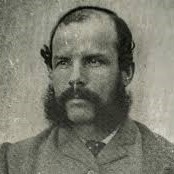
1829 - 1866
Richard S. Burgess
Summary
Name:
Richard S. BurgessNickname:
BurgessYears Active:
1866Birth:
February 14, 1829Status:
ExecutedClass:
Mass MurdererVictims:
5Method:
Shooting / Bludgeoning / Strangulation / StabbingDeath:
October 05, 1866Nationality:
United Kingdom
1829 - 1866
Richard S. Burgess
Summary: Mass Murderer
Name:
Richard S. BurgessNickname:
BurgessStatus:
ExecutedVictims:
5Method:
Shooting / Bludgeoning / Strangulation / StabbingNationality:
United KingdomBirth:
February 14, 1829Death:
October 05, 1866Years Active:
1866Date Convicted:
September 18, 1866bio
Richard Burgess, born Richard Hill on 14 February 1829 in West London, was said to be the illegitimate son of a guards officer and a lady’s companion. Raised in poverty and without direction, he turned to petty crime by the age of 14. Early brushes with the law included pickpocketing, for which he was flogged and imprisoned. His criminal behavior escalated quickly, and by the age of 16, he had been sentenced to 15 years’ transportation for burglary.
Following nearly two years of solitary confinement, Hill was transported to Melbourne, Australia, arriving in September 1847. Australia’s penal colonies were brutal and unforgiving, but rather than being reformed, Hill became more deeply entrenched in a life of crime. By 1852, he was sentenced to another 10 years’ imprisonment for armed highway robbery, a crime that sealed his identity as a hardened criminal. Upon his release in October 1861, he had assumed a new name, Richard Burgess, reportedly stolen from a New South Wales runholder he had previously tried to rob. Burgess left Australia in January 1862, heading to New Zealand in search of opportunity during the Otago gold rush.
murder story
The Maungatapu murders, among the most infamous mass killings in New Zealand colonial history, occurred in June 1866, under the orchestration of Richard Burgess and his gang. The crimes unfolded along the Maungatapu track, a remote path southeast of Nelson, commonly used by gold miners traveling between the West Coast and Nelson.
On 12 June 1866, the gang set out to rob and murder a traveler named James Battle, who was believed to be carrying a large sum of gold and cash. Luring Battle into a trap, the men beat him, robbed him, and ultimately killed him. His body was dumped and hidden in the bush. What made the situation more chilling was the calculated nature of the attack.
Emboldened by the ease of their first kill, Burgess and his men decided to escalate their operation. The next day, on 13 June 1866, they ambushed a group of four gold buyers such as James Dudley, Felix Mathieu, Louis de Pontius, and Heinrich Kempthorne, who were traveling the same track. The victims were bludgeoned, shot, or strangled, and then buried in shallow graves. These murders were not just for money, but a grim display of dominance and impunity.
The killings caused immediate concern when the victims failed to arrive at their destination. Authorities launched an investigation and, through a series of tips and searches, eventually captured the gang. One of the gang members, Joseph Sullivan, turned Crown witness in exchange for leniency and revealed the full scope of their crimes. His confession led to the discovery of the bodies and the arrest and trial of Burgess, Kelly, and Levy.
During the August 1866 trial, Burgess remained defiant. Far from showing remorse, he boasted in court of having committed nine murders, and even wrote a sensational memoir while awaiting execution, a lurid recounting of his crimes that fascinated and horrified the public. His callousness stunned the courtroom. He portrayed himself as both victim and predator, claiming destiny had placed him on this path.
Despite a spirited defense from his lawyer, the overwhelming evidence and Sullivan’s testimony ensured conviction. Burgess was sentenced to death by hanging, and on the morning of 5 October 1866, he was executed at Nelson Gaol.